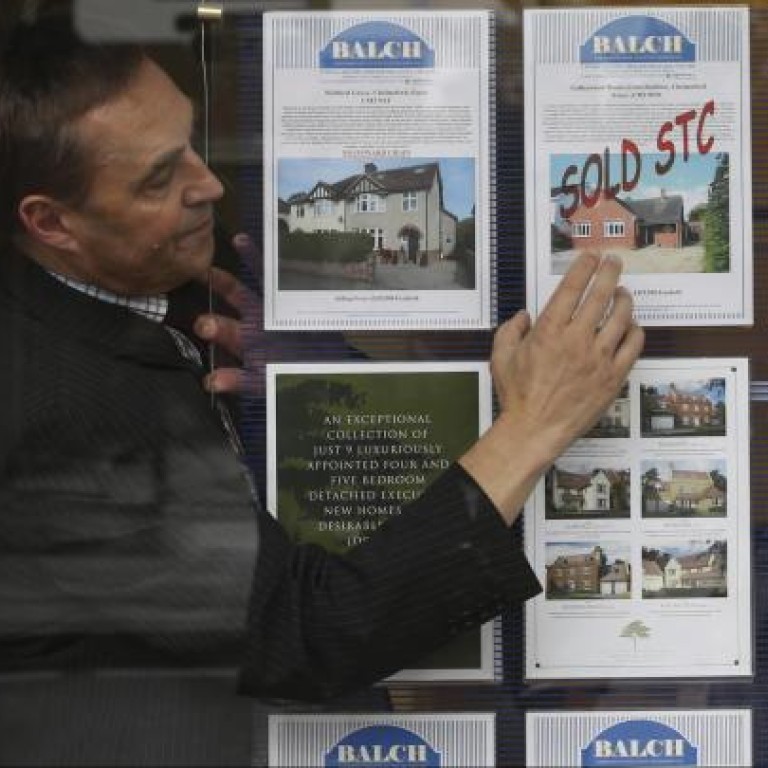
Investors flock to Britain's market for student rental housing
Drawn by the potential for better returns than in Britain's regular rental market, fund managers are betting big on higher education
The 18-year-old will begin a course at the Liverpool Institute for Performing Arts this month, renting a room in a downtown student residence operated by Unite Group for about £100 (HK$1,257) a week.
He will also spend thousands of pounds on tuition fees during the academic year, after the government tripled the maximum amount universities are allowed to charge.
"Taking on more debt worries me a bit, but I'm hoping to follow my dreams and that this course pays off," said Redhead, who will embark on foundation studies in acting.
Students prepared to pay a premium to live with their peers in city-centre locations are proving a bonanza for companies like Unite, Britain's biggest provider of student accommodation. That in turn is fuelling acquisitions in an industry where yields are higher than other parts of the British property market. Dutch pension-fund manager PGGM NV yesterday bought 60 per cent of Britain's second-largest student-housing operator in a deal valued at £840 million.
"There's a real focus by big financial institutions on alternative real-estate assets that are less cyclical and more defensive," said Philip Hillman, the London-based head of student housing at property broker Jones Lang LaSalle.
College dormitory rents are rising faster than inflation, encouraging firms including Mansion Student Accommodation Fund and operators backed by buyout firms Oaktree Capital Management and Carlyle Group to invest about £800 million on student homes in the first half, Jones Lang estimates. That was more than double the figure from a year earlier.
PGGM bought the stake in UPP Group Holdings, a company that manages about 27,000 beds for 13 colleges, from infrastructure funds managed by Barclays. The deal, the biggest of its kind in Europe, will ensure that last year's record spending spree of £1.18 billion will be beaten this year.
Unite runs housing for 40,000 students in 24 locations. In the last academic year, 99 per cent of the company's properties were occupied, up from 97 per cent a year earlier, according to its first-half results. Reservations for this year amounted to 87 per cent at the end of June, enabling Unite to generate rental growth of 3 per cent to 4 per cent.
Unite announced a plan today to develop London buildings containing as many as 4,000 beds with Government of Singapore Investment Corporation's real-estate unit. Unite and the sovereign wealth fund will invest a total of £330 million in the venture.
The British company rose to its highest level since April 2010 in London trading, bringing this year's gain to about 53 per cent and lifting Unite's market value to £411 million.
Western European dormitory sales almost tripled to €1.97 billion (HK$19.95 billion) in the 12 months to June 30, according to Real Capital Analytics. That beat the €1.44 billion in deals in the US, the world's largest market.
Student housing offered a "new and interesting opportunity" for investment, said Dimf Ghijsels, head of research at Bouwfonds Real Estate Investment Management. The money manager may start a €300 million student-residence fund in addition to its European Residential Fund's dormitories.
Larch House, Redhead's new Liverpool home, is a 10-minute walk from the Institute for Performing Arts, co-founded by Paul McCartney in 1996. Redhead will share a lounge, kitchenette and bathrooms with three others.
A 1962 law entitled all full-time students to a free education and a local-authority grant for accommodation and other expenses. That changed two decades ago, when the government introduced fees to help pay for an expansion in higher education.
The proportion of school-leavers seeking a university place rose to about a third in the 1990s, from 6 per cent in the 1950s, according to the 2010 Browne Report. Since 2006, the annual intake by British universities has climbed by 100,000 students.
Since 1999, the number of overseas students has almost doubled, to a total of 428,225, according to the Higher Education Statistics Agency. That's the highest in the world after the US. Foreign students typically pay far more than local undergraduates.
"We were concerned about setting up a home because we don't know how it works in the UK," said Yuhan Wang, 26, who is due to arrive with his student wife later this month from Nanjing, China, to start a master's in accounting and finance at Aberdeen University. They will pay Unite £7,600 a year for a studio in the Scottish city.
In 1997, British students began paying £1,000 a year in tuition fees. That rose to £3,000 in 2006 and, starting this month, universities are allowed to charge as much as £9,000 per year.
Rental income from a typical student residence in Britain yielded about 6.3 per cent last year, Savills estimates. That compared with 4.3 per cent for other types of homes and 5.8 per cent for commercial real estate, according to the London-based property broker.
Private operators provided about 10 per cent of the rooms rented by Britain's 1.67 million full-time students during the last academic year, data from the Higher Education Statistics Agency show.
